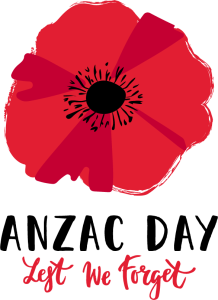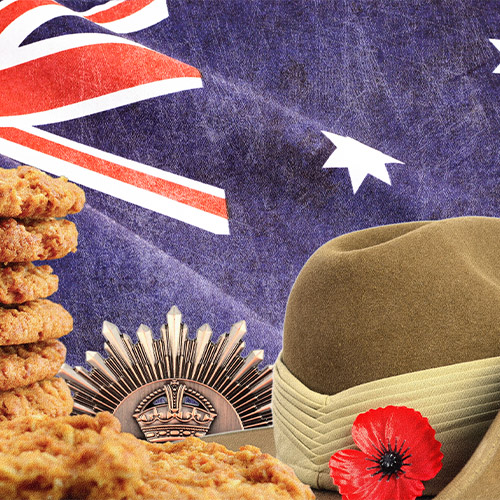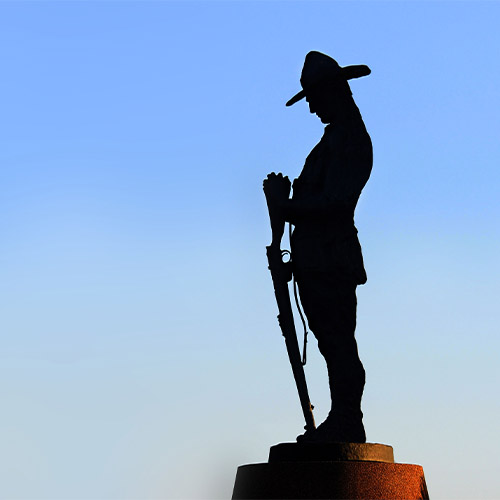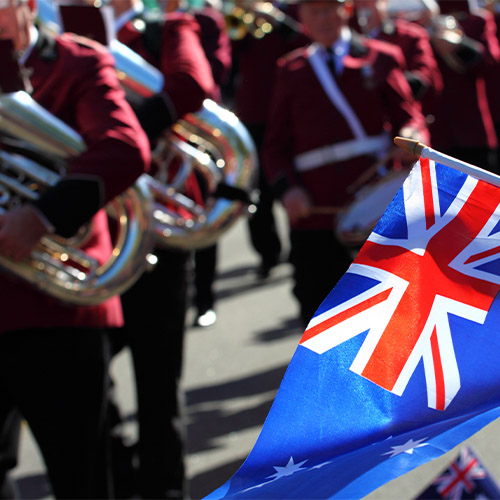Y3. Lesson 14. Music for a special purpose - Anzac Day
Prior learning: None
Duration: 30 minutes
Materials: Recorders
Keywords: Beat, rhythm, singing, chanting, partners, rhymes, circle games.
Difficulty: ![]()
Prepare
Present
Music for a special purpose - Anzac Day
Practise

Anzac Day, observed on April 25th, commemorates the landing of the Australian and New Zealand Army Corps (ANZACs) at Gallipoli, Turkey, in 1915 during World War I. It honours the bravery and sacrifice of those who served and died in all wars, conflicts, and peacekeeping operations. Dawn services, marches, and remembrance ceremonies across Australia and New Zealand mark the day.
Explain what ANZAC Day is and why it's observed. You can say that it's a day to remember and honour the soldiers from Australia and New Zealand who have served in the military to protect their countries.
Tailor your conversation to your student's age and maturity level. Younger children may only need to know that ANZAC Day is about remembering brave people who tried to make the world safer. Older children can handle more details about war, including its causes and consequences.
Emphasise the values of bravery, sacrifice, and teamwork that soldiers exhibited. This can help children understand the importance of these qualities in a way that is not centred solely on war violence.
It's okay to explain that war often results in loss and sadness. Let them know that many soldiers didn't return home, and that's why it's important to remember and honour their sacrifice.
Books, films, and museum visits geared towards children can help convey the message of ANZAC Day in a way that's understandable and appropriate for them.
Allow students to ask questions and express their feelings about what they've learned. This can help you understand their thoughts and provide further explanations or reassurances if needed.
 Melodic development
Melodic development
![]() Students add another song to their repertoire.
Students add another song to their repertoire.
- Lead the class in singing the song.
- Teach that this is an old afro-american song called a spiritual.
- When secure, ask the class if there is a note longer than all the others and where it is found.
- Answers will include a semibreve on the word "lu" of "hallelujah".
- Ask how many beats a semibreve lasts for [4].

 Rhythmic development
Rhythmic development
![]() Students
Students
- Students begin the song by alternately clapping their hands and clicking their fingers together on the beat for the first four measures, "Do you know the Muffin Man?"
- For the second line, they switch alternately to patting their head and shoulders with their hands ton the last four measures.
- Students can vary and repeat this sequence throughout the song, creating a loop of body percussion that adds a rhythmic layer to the singing.
- This makes the performance more engaging and helps participants feel the beat of the song more deeply.
 Creative movement
Creative movement
![]() Students engage in creative play in this circle game.
Students engage in creative play in this circle game.
- Students form a circle while the "Possum" (the current "It") stands outside the circle, holding a knotted handkerchief.
- As the song starts, "It" moves around the circle's perimeter. They gently tap a student on the shoulder with the handkerchief, place it behind them, and then quickly proceed around the circle in one direction.
- The tapped student picks up the handkerchief and heads in the opposite direction. Upon meeting, they bow to each other three times before continuing their quick pace.
- The goal for "It" is to occupy the vacant spot first. Failure to do so results in the tapped student becoming the next "Possum."
 Listening
Listening
![]() Students listen to music that is often used in Anzac Day commemoration.
Students listen to music that is often used in Anzac Day commemoration.

- Teach that The Last Post is a bugle call played before the period of silence at a commemorative service.
- The Rouse is a bugle call that is played after a period of silence at a ceremony that is not held at dawn. During The Rouse, the flags are slowly raised to the masthead. Historically, The Rouse was played after Reveille to get soldiers out of their beds. The use of The Rouse in a ceremony implies hope for a day when the living and the dead will rise together.
- At a dawn service on Anzac Day, Reveille is played on a bugle or trumpet and signals the end of the period of silence. While the bugle is played, the flags are slowly raised to the masthead.
- Historically, Reveille was played to wake up sleeping soldiers on the battlefield. Today, Reveille is played as the day's first call in army barracks.
- Abide with Me is a hymn asking God to remain by your side throughout life and death.
- O Valiant Hearts is a hymn of remembrance inspired by a poem published after World War I to commemorate those who died.
 Visual learning
Visual learning
![]() Students investigate the meaning of Anzac Day images.
Students investigate the meaning of Anzac Day images.
- Project the four images on the board.
- In the first image, several items are commonly seen on Anzac Day. Ask students how many items they can name and their purpose. [Medal, slouch hat, poppy, Anzac biscuits, Australian flag].
- Ask students what they see in the second image. [Memorial Wall in Canberra]. Discuss the purpose of the wall and the inscriptions.
- Ask students what is the meaning of the third image. [Statue in Sydney of The Fallen Soldier]. Discuss.
- What is shown in the fourth image? [Marching Band, Australian flag]. Ask what is happening in the picture.




 Instruments
Instruments
![]() Students discover the new note D on the recorder.
Students discover the new note D on the recorder.
- Demonstrate the new note D using your left hand's second finger only. The left-hand thumb is not used.
- Ask the class to play the new note and then name it.
- Students should hold their instruments correctly and use gentle blowing to avoid squawking.
- Students should then play the song D For Me, which consists of only D notes.
- Remind students that the dots on the double barlines in the last measure mean repeat from the beginning.
- Remind students to count 1,2,3,4 in their heads as they play.
 Part work
Part work
![]() Students divide into two groups in this part work exercise.
Students divide into two groups in this part work exercise.
- Divide the class into two groups.
- Choose a simple classroom song that is familiar to students.
- The first group sings the song with solfege and hand signs.
- The second group taps a rhythmic ostinato that is read from notation.
- Ostinato example patterns are shown on the left.
 Assess
Assess
Suggested lessons
Y1. Beat II

Y1. Beat III

Y1. Beat IV

